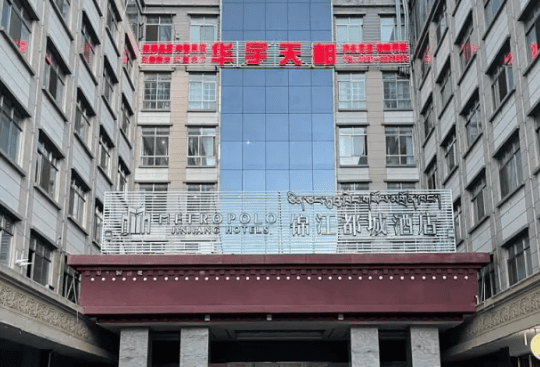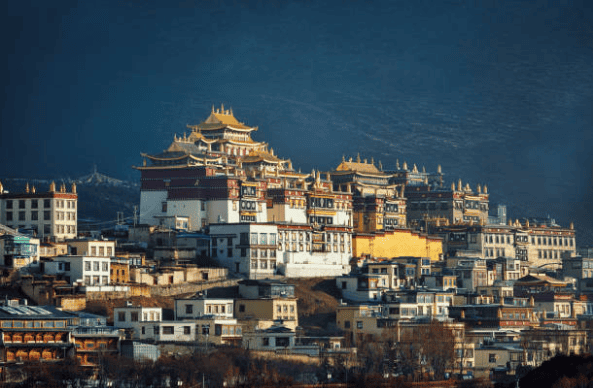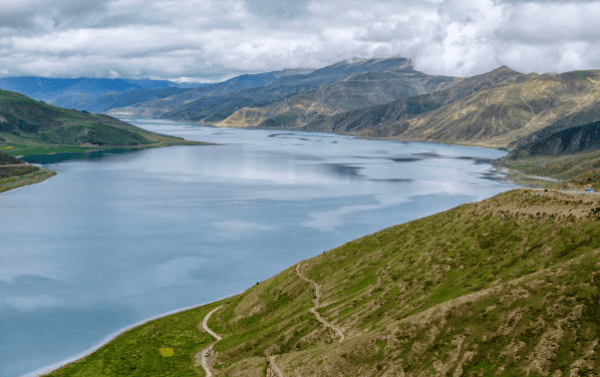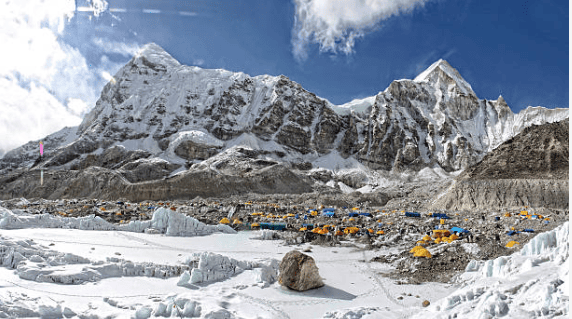I’ve long wanted to visit Tibet, inspired by the comic Tintin in Tibet, which tells the story of Tintin, Snowy, and Captain Haddock’s struggle to save their friend Chang, stranded on Mount Everest after a plane crash.
However, Tibet is not an easy place to visit. Since coming under Chinese control on October 24, 1951, the Chinese government has restricted foreign access to Tibet. Tourists wishing to visit Tibet must join an organized tour in collaboration with a Chinese travel agency and obtain a special permit to enter Tibet, in addition to a Chinese visa. Only a Chinese travel agency can issue this special permit. Thus, for our trip to Tibet in October 2023, my son Dani and I joined a tour package.
We left Jakarta on October 14, 2023, flying with Cathay Pacific, with a transit of around five hours in Hong Kong. We took advantage of this time to leave the airport, hop on the Airport Express train, and explore the Causeway Bay area. In the afternoon, we continued to Chongqing, the fifth-largest city in China, where we spent the night before continuing to Lhasa, Tibet’s capital, the next day. We arrived in Chongqing around 6 p.m. and checked into the Orange Hotel downtown. The hotel is close to one of Chongqing’s popular food centers, so that evening we tried the local delicacy, Chongqing hot pot with beef, tofu skin, mushrooms, and vegetables in a spicy, flavorful mala broth. After dinner, we strolled through Chongqing, a modern and impressively clean city.
On the morning of October 15, we left for Chongqing Airport, and at 11:15, we boarded a China Southern Airlines flight to Lhasa, arriving around 3 p.m. Lhasa, at an altitude of around 3,800 meters above sea level, is often called the “roof of the world” because it lies on the Everest plateau, the world’s highest. Lhasa Airport is among the highest-altitude airports worldwide.
After checking in at the Metropolo Hotel, we had some free time. Dani and I enjoyed dinner at a nearby night market, where many restaurants offer halal food, especially the unique cuisine of Xinjiang, where the Uighur Muslim population is predominant. Most menus feature yak, a shaggy, cow-like animal. After dinner, we returned to the hotel to rest.

On October 16, we began our tour of Lhasa. Our first stop was Jokhang Temple. Located in the heart of Lhasa, Jokhang is Tibet’s holiest temple, established in the 7th century by King Songtsen Gampo. It houses the revered statue of Buddha Jowo Sakyamuni. The temple’s architecture blends Tibetan, Nepalese, and Indian styles, making it a truly unique site.

Photography inside the temple is prohibited, but visitors can take photos outside. As a sacred Buddhist site, the temple is filled with worshippers walking around it, some of whom perform prostrations and crawl on the ground as part of their devotion.
The streets around Jokhang Temple are known as Barkhor Street, a crucial pilgrimage route for Tibetan Buddhists. It’s also a bustling shopping center where you can find traditional Tibetan crafts, local food, and even international options like KFC and Pizza Hut. Barkhor Street also has many photo studios and places to rent traditional Tibetan clothing.
Our next stop was Sera Monastery, founded in 1419 by Jamchen Chojey. Sera is one of the three great educational monasteries in Lhasa, renowned for its daily monk debates held in the courtyard. These debates are an important aspect of Buddhist education in Tibet, and it was fascinating to see the monks’ energetic style, punctuated by loud hand claps.
On our third day in Lhasa, October 17, we visited Tibet’s iconic landmark, Potala Palace. This palace, the symbol of Lhasa, was the former residence of the Dalai Lama. Built in the 17th century by the 5th Dalai Lama, Potala Palace contains over 1,000 rooms, including chapels, temples, and living quarters. It is also a UNESCO World Heritage Site.

The palace, situated on a hill, has many levels. To reach the main hall, visitors must climb hundreds of steps. Although many areas inside the palace prohibit photography, the palace’s exterior is stunning, perfect for photos.
After lunch, we visited the Tibetan Traditional Handicraft Center, showcasing traditional crafts like weaving, wood carving, and jewelry. Visitors can participate in activities, such as making incense, and take home their creations. Here, we also had the opportunity to have our names written in Tibetan script.
On the morning of October 18, we left Lhasa for Yamdrok Lake, one of the three largest sacred lakes in Tibet. Located at over 4,400 meters, Yamdrok Lake is stunning with its clear blue water and surrounding mountains. At the lake, visitors can take photos with iconic Tibetan animals, like pashmina goats, massive long-haired mastiffs, and yaks, for 50 yuan per photo.

We then continued to Karola Glacier, which lies along the route from Lhasa to Shigatse. Here, we could see the glacier and snow-capped mountains up close, surrounded by breathtaking natural beauty. After taking photos at Karola Glacier, we headed to Shigatse, Tibet’s second-largest city, home to Tashilhunpo Monastery, one of Tibet’s largest monasteries. Founded by the first Dalai Lama in the 15th century, this monastery is the residence of the Panchen Lama.
The next day, October 19, we left Shigatse for Rongbuk Monastery, the world’s highest monastery, located around 5,000 meters above sea level. From here, we enjoyed a magnificent view of Mount Everest. The monks’ homes surrounding Rongbuk are charming and clean, primarily white in color.
After lunch, we traveled to Gawula Pass, at over 5,000 meters, offering a spectacular view of the Himalayas, including a distant view of Mount Everest.
In the afternoon, we arrived at Everest Base Camp, located at 5,200 meters above sea level, where we spent the night in a large tent with seven rooms, each with two to three beds. The central area has a dining space and a fireplace. From the camp, Everest’s peak isn’t clearly visible; to see it from the best vantage point, visitors must hike about two kilometers up a slight incline. At this elevation, oxygen levels are low, making the walk tiring and leaving us short of breath.

Portable oxygen cylinders are essential for dealing with the thin air. After a 30-minute walk, we reached the best spot to enjoy the breathtaking view of Mount Everest’s peak, standing at an elevation of 8,849 meters.
The view of Everest’s peak that evening was stunning. Our exhaustion and breathlessness were entirely worth it for the awe-inspiring sight. As sunset approached, the snow on Everest’s peak took on a golden hue, one of the most beautiful moments I’ve ever witnessed.
The return to the base camp tent was easier as it was downhill. We enjoyed a hot pot dinner inside the tent to warm up, as the temperature outside dropped to minus 12 degrees Celsius. As the night wore on, it got even colder, reaching a low of minus 16 degrees.
The extreme cold and thin air made it difficult to sleep, so I spent some time warming up near the stove in the common area. Soon, others joined me, unable to sleep. It was a long night, and we eagerly awaited the warmer morning.
